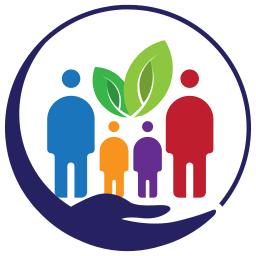
In order to qualify for OSAP and continue receiving the assistance, the applicants must fulfill the following criteria:
Residency: To be eligible for OSAP, you must be a Canadian citizen, a permanent resident, or a protected person. International students are generally not eligible.
Ontario Residency: You must be an Ontario resident to apply for OSAP. This means you have lived in Ontario for at least 12 consecutive months before the start of your academic term.
Enrollment: You must be enrolled in an approved post-secondary program at a designated institution. This includes universities, colleges, and private career colleges.
Full-Time Status: OSAP primarily supports full-time students. To qualify, you need to be taking at least 60% of a full course load (40% for students with permanent disabilities).
Financial Need: OSAP assesses your financial need based on factors such as family income, assets, and other resources. The lower your family income, the more assistance you may receive. OSAP has developed an online aid estimator tool where you can get an estimate of the amount of assistance you may qualify for. Please visit the OSAP website to use the online calculator.
Satisfactory Academic Progress: You must maintain satisfactory academic progress to continue receiving OSAP funding.
Once you have been approved for a grant and/or a loan, you can use the proceeds to cover the following expenses:
Tuition Fees: OSAP can help cover your tuition costs, which are essential for attending postsecondary institutions.
Books and Equipment: You can use OSAP funds to purchase textbooks, study materials, and necessary equipment for your courses
Other Compulsory Fees: OSAP can assist with mandatory fees charged by your educational institution, such as student activity fees, health services fees, and other administrative costs.
Transportation: If you commute to your school, OSAP can contribute to transportation expenses, including public transit fares or gas costs.
Childcare: If you have dependent children, OSAP can help cover childcare expenses while you attend classes.
Disability-Related Educational Services and Equipment: OSAP supports students with disabilities by providing funding for specialized services, adaptive technology, and other accommodations.
The main difference between grants and loans is repayment. OSAP loans are borrowed funds that you must pay back after completing your studies. These loans accrue interest, and you’ll need to start repaying them once you finish your education or if you leave school. OSAP grants are non-repayable funds. You receive them to help cover educational expenses, and they do not require repayment.
OSAP loans are not considered taxable income. Therefore, you do not need to report them on your tax return. They do not directly impact your annual tax liability.
Post-secondary school scholarships, fellowships, and bursaries are not taxable if you received them in 2023 for your enrolment in a program for which you are considered a full-time qualifying student for 2022, 2023 or 2024. (source: Canada.ca) Post-doctoral fellowships are taxable. The scholarship exemption will be limited to the extent that the award was intended to support the student’s enrolment in the program. To determine what portion of your award was intended to support your enrolment, you should consider such factors as:
the duration of the program;
any terms and conditions that apply to the award; and
the period for which support is intended to be provided by the award.
The interest you pay on your OSAP loan qualifies for a non-refundable tax credit. A non-refundable tax credit is a tax break that reduces your tax liability dollar for dollar. Unlike refundable tax credits, which can result in a tax refund if your owed amount falls below zero, non-refundable tax credits only reduce your tax liability to zero. The credit helps reduce the amount of income tax you owe to the government.
If you paid interest on your student loan in 2023, the NSLSC will issue a T4A Tax Receipt and an annual statement. You can find the annual statement in your secure inbox, available as of January 12th, 2024. The T4A will be available by February 29th, 2024. To claim the interest paid on your student loans, enter the eligible amount on Line 31900 of your federal tax return. The corresponding provincial or territorial non-refundable tax credit must also be claimed on Line 58520 of your Form ON428.
Remember to keep all your documents for a period of six years in case the Canada Revenue Agency (CRA) requests them later. Accurate reporting ensures you benefit from the tax credit while managing your financial obligations.
Remember to keep all your documents for a period of six years in case the Canada Revenue Agency (CRA) requests them later. Accurate reporting ensures you benefit from the tax credit while managing your financial obligations.
For further information please contact Unity Financial Services at +1 438 7013770 or visit www.unityfs.ca
